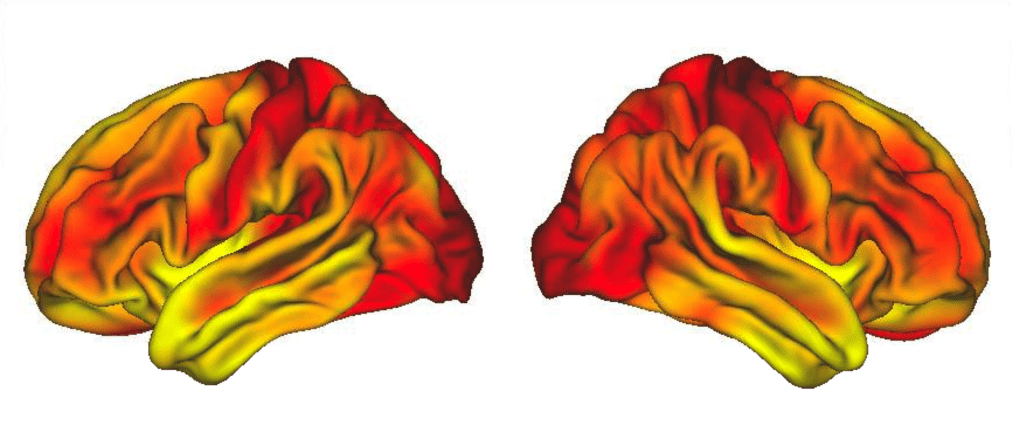A new study has found that growing up in vulnerable socio-economic can affect a child’s brain — and the impact carries on well into adult life.

We’ve known for quite a while that lacking adequate education, nutrition and access to healthcare, adversely affects a child’s brain — it’s a matter which has been studied extensively in the past. But now, a new study from researchers at University of Texas at Dallas examined an effect that is not so clear: how the adverse effect carries on into adulthood.
“We know that socioeconomic status [SES] influences the structure of the brain in childhood and older age, but there’s been a gap in the research. We wanted to see if there were relationships between SES and the brain across a wider range of adulthood,” said Dr. Gagan Wig, assistant professor in the School of Behavioral and Brain Sciences at UT Dallas and corresponding author of the study published online in the Proceedings of the National Academy of Sciences.
[panel style=”panel-warning” title=”Socioeconomic status and the brain” footer=””]Children’s cognitive abilities and school achievements are deeply affected by socioeconomic status. Numerous studies have reported lower cognitive performance in relation to unfavorable environments.
The evidence suggests that human brain development occurs within a socioeconomic context and as a result, childhood socioeconomic status influences neural development — particularly of the systems that subserve language and executive function. Simply put, poverty can be bad for children’s brains.[/panel]
The study included 304 individuals ranging between 20 and 89 years of age. Their socioeconomic status was assessed both objectively and subjectively, based on the participants’ own beliefs. Then, their brain activity was assessed through magnetic resonance studies, during a state of resting wakefulness. Researchers also used anatomical brain scans to measure the thickness of cortical grey matter in each individual’s brain.
The team reports that in middle-aged adults (ages 35 to 64), a lower socioeconomic status was associated with a more disorganized brain network and thinner cortical grey matter. The relationship persisted even after researchers corrected for demographics, measures of both physical and mental health, and cognitive ability.
It’s not clear how this effect manifests, Wig told ZME Science, but we can likely expect a number of downsides for people growing up in disadvantaged socioeconomic environments.
“Other studies, including our previous work, have demonstrated that the brain variables we examined (measures of brain network organization and cortical thickness) are correlated with cognitive ability across a number of domains (e.g., fluid intelligence, long-term memory). Given that this relationship exists, we controlled for individual differences in cognitive abilities in our analyses. One prediction though, is that individuals who have less organized networks and thinner cortical grey matter may exhibit faster cognitive decline as they age and/or be particularly susceptible to age-related disease.”
While the correlation seemed to fade for the elderly, the fact that the brain effects carry on well into adulthood is a major point of concern. Even more worryingly, the correlation carried out well above the poverty line. The one point researchers stress is the fact that socioeconomic status is associated with numerous lifestyle changes, and it’s hard to pinpoint which one of these changes is the main culprit (or if there is a mixture).
“What we have found in middle-aged adults is a correlation between socioeconomic status and brain function and anatomy,” Wig said. “What makes these results more striking is that the individuals we studied were predominantly above the poverty line. This provides evidence that SES-brain relationships are not limited to individuals at the extreme ends of SES, but are present across a broader SES range. However, because differences in SES can be associated with differences in many factors, including those related to diet and health behaviors, access to health care, and levels of stress, it’s not yet clear which of these, if any, is the source of the observed relationships.”
The relationship appears to be linear, Wig told ZME Science — in other words, the lower your socioeconomic status, the more your brain is affected. However, it’s unclear if this carries out for the entire economic range.
“Yes, the observation was linear within the middle-age adults. As we note in the paper and in the press release, this study sample doesn’t have too many people falling below the poverty line, so it is presently uncertain whether any non-linear relationships are present between the brain variables and SES across a broader SES range,” Wig explained
However, regardless of what the decisive factor is, the bottom line is that socioeconomic status is such an important element for brain health, even in middle age. This is troubling and warrants further research.
Wig says it’s still too early to make policy recommendations, but he emphasizes the need for a better understanding of this phenomenon.
“This data demonstrate that an individual’s socio-economic environment continues to relate to their brain function and anatomy beyond childhood into middle-age adulthood, and that it’s important to study this age segment in order to gain a deeper understanding of brain health into older age. This is particularly important given the changing demographics of the population in many countries.”
The study has been published in Proceedings of the National Academy of Sciences.






